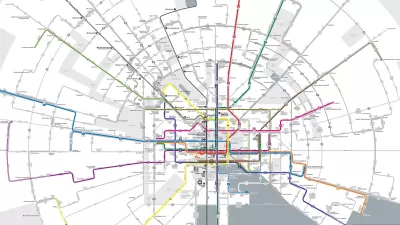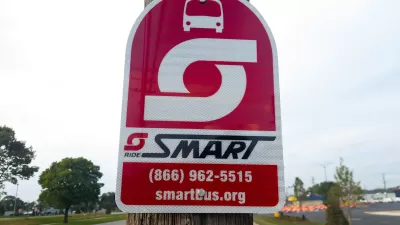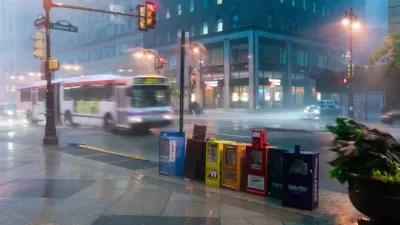The $135 million BaltimoreLink bus system redesign launched in June 2017.

Colin Campbell reports on the performance of Baltimore's revamped bus system a year after the BaltimoreLink system launched, designed to improve the reliability of bus service on the Maryland Transportation Authority (MTA) system.
Maryland Transit Administrator Kevin Quinn tells Campbell that complaints are down and reliability is up. Ridership has mostly bounced back after a big decline in the month following the system redesign.
Ridership on the system fell by nearly 23 percent — or 1.4 million trips — in the month following the overhaul, according to data MTA reported to the federal government. It has since bounced back: Monthly ridership in May was down less than 1 percent compared to May 2017.
The main goal of the system redesign was reliable service, and that measure is still proving difficult to achieve. BaltimoreLink strives to enable buses arriving when they're supposed to 80 percent of the time. "Nearly a third of the LocalLink buses and more than a quarter of the high-frequency CityLink buses still don’t show up on time, according to MTA data," reports Campbell.
More changes to the Baltimore bus system is coming this year, however, including mobile ticketing and real-time location tracking.
FULL STORY: One year of BaltimoreLink bus system: Ridership bounces back, reliability still falls short

Study: Maui’s Plan to Convert Vacation Rentals to Long-Term Housing Could Cause Nearly $1 Billion Economic Loss
The plan would reduce visitor accommodation by 25,% resulting in 1,900 jobs lost.

North Texas Transit Leaders Tout Benefits of TOD for Growing Region
At a summit focused on transit-oriented development, policymakers discussed how North Texas’ expanded light rail system can serve as a tool for economic growth.

Why Should We Subsidize Public Transportation?
Many public transit agencies face financial stress due to rising costs, declining fare revenue, and declining subsidies. Transit advocates must provide a strong business case for increasing public transit funding.

How to Make US Trains Faster
Changes to boarding platforms and a switch to electric trains could improve U.S. passenger rail service without the added cost of high-speed rail.

Columbia’s Revitalized ‘Loop’ Is a Hub for Local Entrepreneurs
A focus on small businesses is helping a commercial corridor in Columbia, Missouri thrive.

Invasive Insect Threatens Minnesota’s Ash Forests
The Emerald Ash Borer is a rapidly spreading invasive pest threatening Minnesota’s ash trees, and homeowners are encouraged to plant diverse replacement species, avoid moving ash firewood, and monitor for signs of infestation.
Urban Design for Planners 1: Software Tools
This six-course series explores essential urban design concepts using open source software and equips planners with the tools they need to participate fully in the urban design process.
Planning for Universal Design
Learn the tools for implementing Universal Design in planning regulations.
City of Santa Clarita
Ascent Environmental
Institute for Housing and Urban Development Studies (IHS)
City of Grandview
Harvard GSD Executive Education
Toledo-Lucas County Plan Commissions
Salt Lake City
NYU Wagner Graduate School of Public Service





























